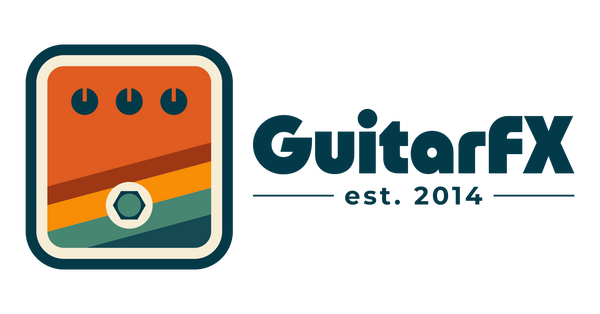What is a Multi Effect pedal?
Share
Multi-effects pedals, combining numerous effects in a single unit, offer a convenient and versatile solution for guitarists looking to explore a broad range of sounds. This guide delves into the world of multi-effects pedals, exploring their evolution, functionality, and how they can be used to expand your sonic palette.
The Evolution of Multi-Effects Pedals
The history of multi-effects pedals begins with the advent of digital technology in the music world. Early multi-effects units, appearing in the 1980s, were groundbreaking, offering multiple digital effects combined in one device. Over the years, these pedals have evolved significantly, incorporating advanced digital processing, user-friendly interfaces, and the ability to emulate classic and modern effects with great accuracy.
Understanding Multi-Effects Pedals
A multi-effects pedal typically includes a wide range of effects such as distortion, overdrive, chorus, reverb, delay, phaser, flanger, and more. Key features often include:
- Preset and Customizable Patches: Allows users to save and recall specific effect combinations and settings.
- Expression Pedal: Offers real-time control over various effect parameters.
- Connectivity Options: Includes features like USB connectivity for recording and firmware updates, and MIDI compatibility for expanded control.
- Built-in Tuner and Metronome: Essential tools for practice and performance.
Types of Multi-Effects Pedals
Multi-effects pedals range from entry-level units for beginners to professional-grade processors offering studio-quality effects and advanced routing options. Some are designed to mimic the analog pedalboard experience, while others are more experimental, providing unique digital effects and sound manipulation capabilities.
Integrating a Multi-Effects Pedal into Your Setup
Multi-effects pedals can be used as standalone units or integrated with other pedals and equipment. The placement is crucial, and they are often used at the end of the signal chain or in an amplifier's effects loop. Understanding the global and individual effect settings is key to optimizing a multi-effects pedal's performance.
The Interplay with Different Amplifiers and Guitars
Multi-effects pedals can interact with various amplifiers and guitars in different ways. Tube amplifiers can add warmth to digital effects, while solid-state amps might offer a more consistent reproduction of the pedal's output. The type of guitar and pickups will also influence how the effects are perceived, affecting the overall tone and response.
Iconic Multi-Effects Pedals and Their Features
- Line 6 POD Series: Known for its amp modeling and diverse effects options, suitable for both live performance and recording.
- Boss GT Series: Offers a wide range of effects, amp models, and user-friendly interfaces, favored by many professional guitarists.
- Fractal Audio Axe-Fx: Highly regarded for its detailed amp modeling and studio-quality effects, used extensively in professional settings.
Advanced Techniques: Maximizing the Potential of Multi-Effects
Beyond basic effects usage, multi-effects pedals can be used creatively for advanced sound crafting. Techniques like combining multiple modulation effects, creating complex signal chains, and utilizing the expression pedal for dynamic effects control are explored.
Choosing the Right Multi-Effects Pedal
Selecting the appropriate multi-effects pedal depends on your specific needs, playing style, and desired sound. Considerations include the quality and variety of effects, ease of use, build quality, and the ability to integrate with your existing gear.
Conclusion
Multi-effects pedals offer a practical and efficient way to access a wide array of effects, making them an invaluable tool for both live performance and studio work. Understanding and utilizing these pedals can greatly enhance your musical creativity and flexibility.
FAQs
Q: How do I avoid a digital or 'processed' sound with a multi-effects pedal? A: To maintain a natural tone, use the effects judiciously, adjust the mix and level settings to blend the effects subtly with your clean signal, and explore amp modeling options that complement your playing style.
Q: Can multi-effects pedals replace a traditional pedalboard? A: Multi-effects pedals can effectively replace a traditional pedalboard for many players, offering the convenience of having multiple effects in one unit. However, some guitarists may prefer the individual character and control offered by standalone pedals.
Q: Are multi-effects pedals suitable for beginners? A: Yes, multi-effects pedals can be a great option for beginners, offering a cost-effective way to explore a wide range of effects and find their preferred sound.
